There are many different variations of miso soup, but Miso Soup with Poached Eggs is one of my absolute favorites. The richness of the miso and the mellow flavor of the poached egg complement each other perfectly, offering a unique twist on traditional miso soup.
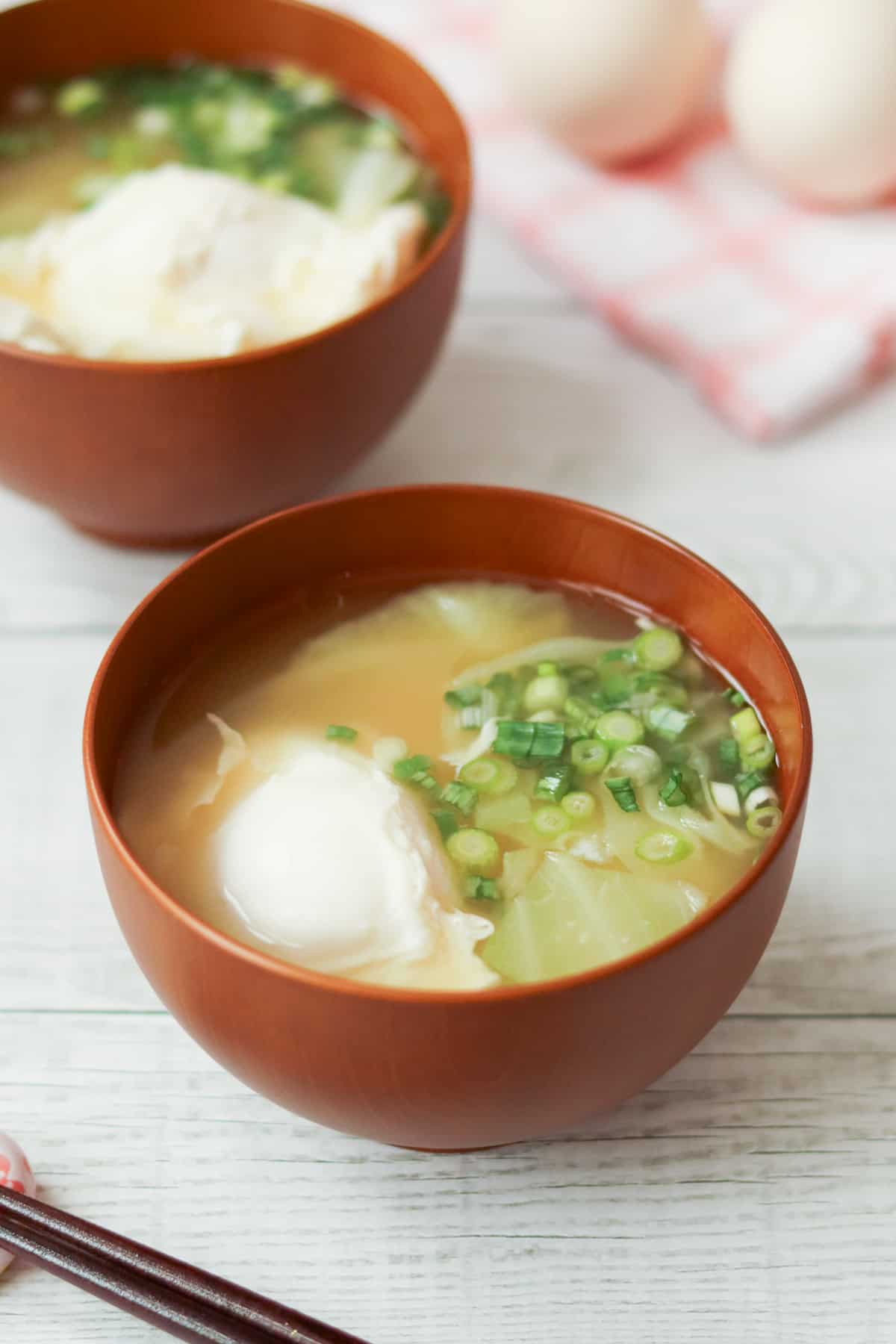
Jump to:
What is Miso Soup with Poached Eggs?
Miso Soup with Poached Eggs is a dish that incorporates eggs into miso soup. By adding eggs to miso soup during the cooking process, the rich flavor of miso combines with the mellow taste of eggs to create a unique flavor. Breaking the egg yolk while eating allows you to experience a shift in the dish's flavor profile.
You will be pleasantly surprised at how much the flavor changes just by adding eggs to regular miso soup. You can easily make it by simply dropping eggs into the miso soup as it simmers. It is both nutritious and satisfying, making it an excellent option.
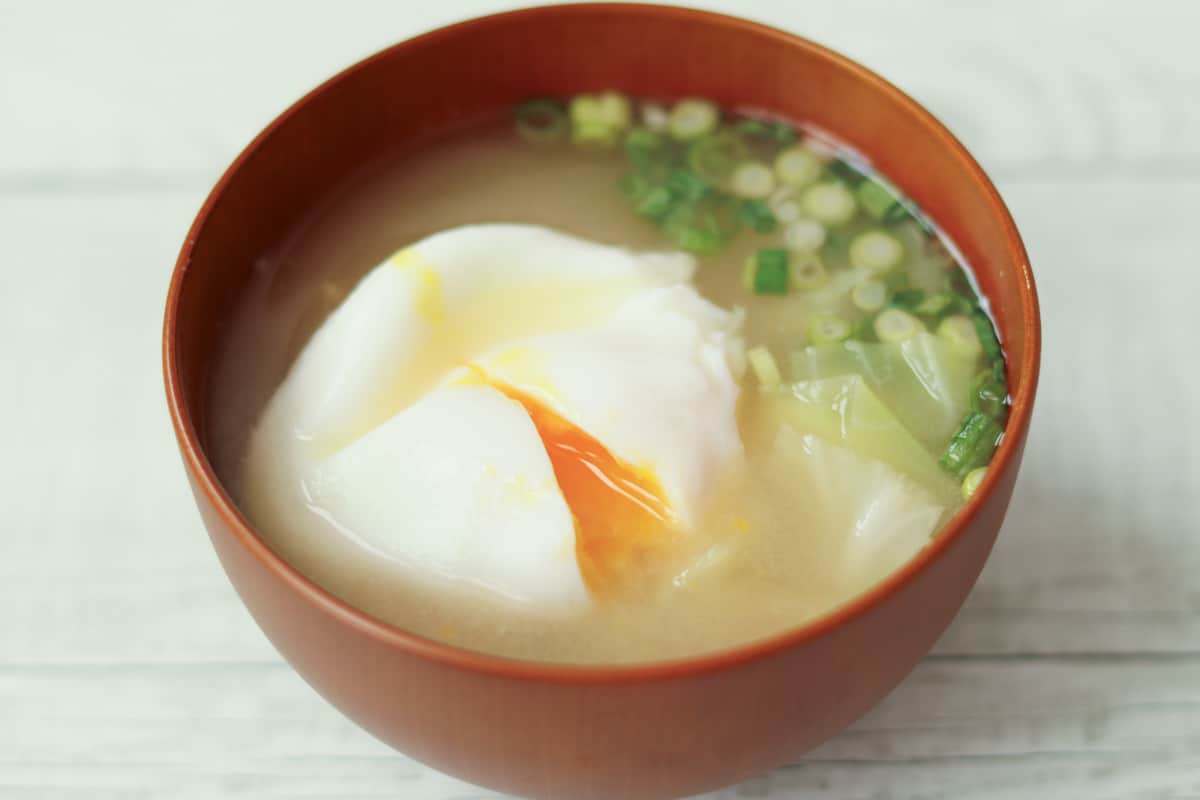
Common additions
Miso Soup with Poached Eggs, just like traditional miso soup, can have various ingredients added to it. Green cabbage, spinach, onions, carrots, and green onions (scallions) are common additions, but you can also add any other ingredients you prefer. Try using vegetables that are locally available.
However, since miso and eggs are the main ingredients in this dish, it is recommended to limit the number of additional ingredients to three at most. Even without any extra ingredients, you can still enjoy it deliciously.
Creating a poached egg-like consistency
When making this dish, the goal is to achieve eggs with a poached egg-like consistency. Although you can vary the doneness of the eggs by adjusting the cooking time, keep in mind that boiling the eggs until the yolks are completely set will prevent the flavors of the miso soup and eggs from blending well together.
When to add miso
For the best experience with miso soup, it is recommended to add miso at the end of the cooking process and avoid heating it afterward. This is because heating miso after adding it can result in a loss of its flavor and beneficial bacteria.
However, if you are concerned about breaking the poached eggs in the soup, you can dissolve the miso before adding eggs. Since broken poached eggs can affect both the appearance and flavor, prioritize ensuring that the eggs don't break while cooking.
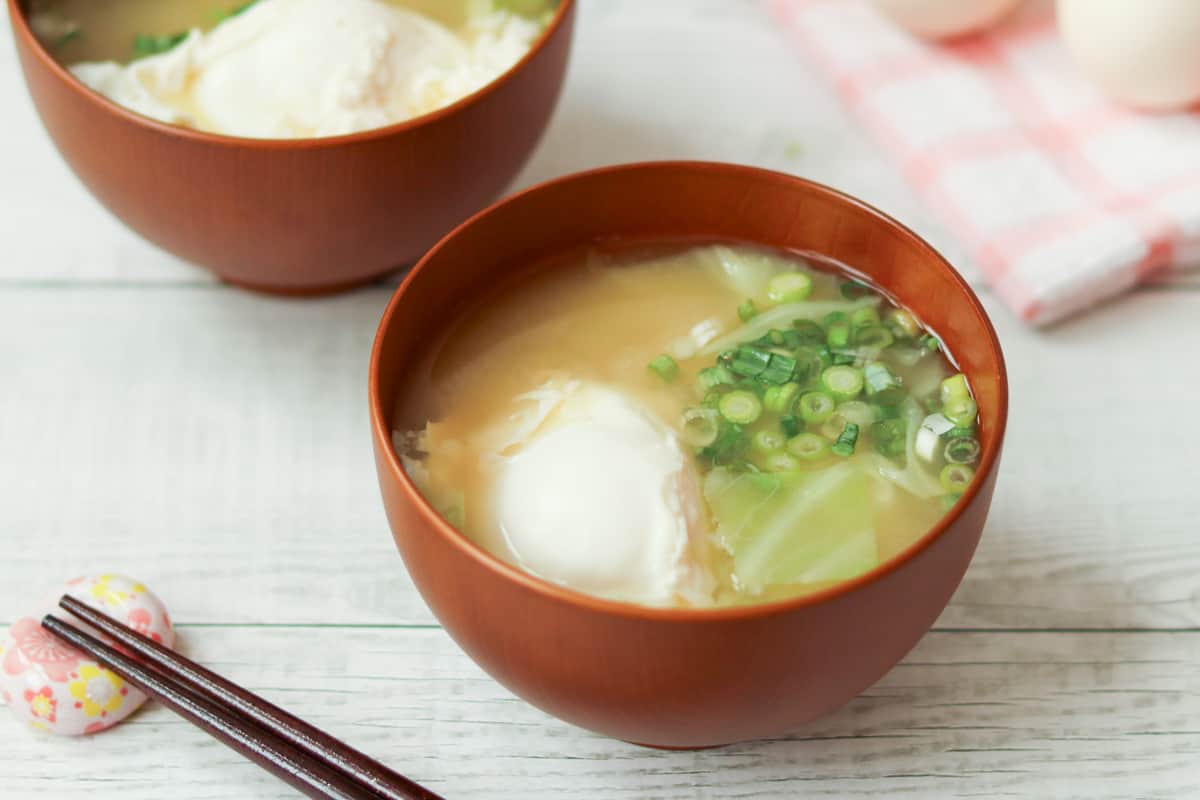
Ingredients
- 1.8 oz green cabbage
- 2 green onions / scallions
- 2 pasteurized eggs
- 2 Tbsp miso
Awase Dashi:
- 2 cups water
- 0.17 oz kombu (dried kelp)
- ½ cup bonito flakes (katsuobushi)
Step-by-step instructions
🕒 Total 55 mins
If you already have awase dashi or another type of dashi, start from step 5. In this case, use 1 ⅔ cups (400ml) of your dashi for 2 servings.
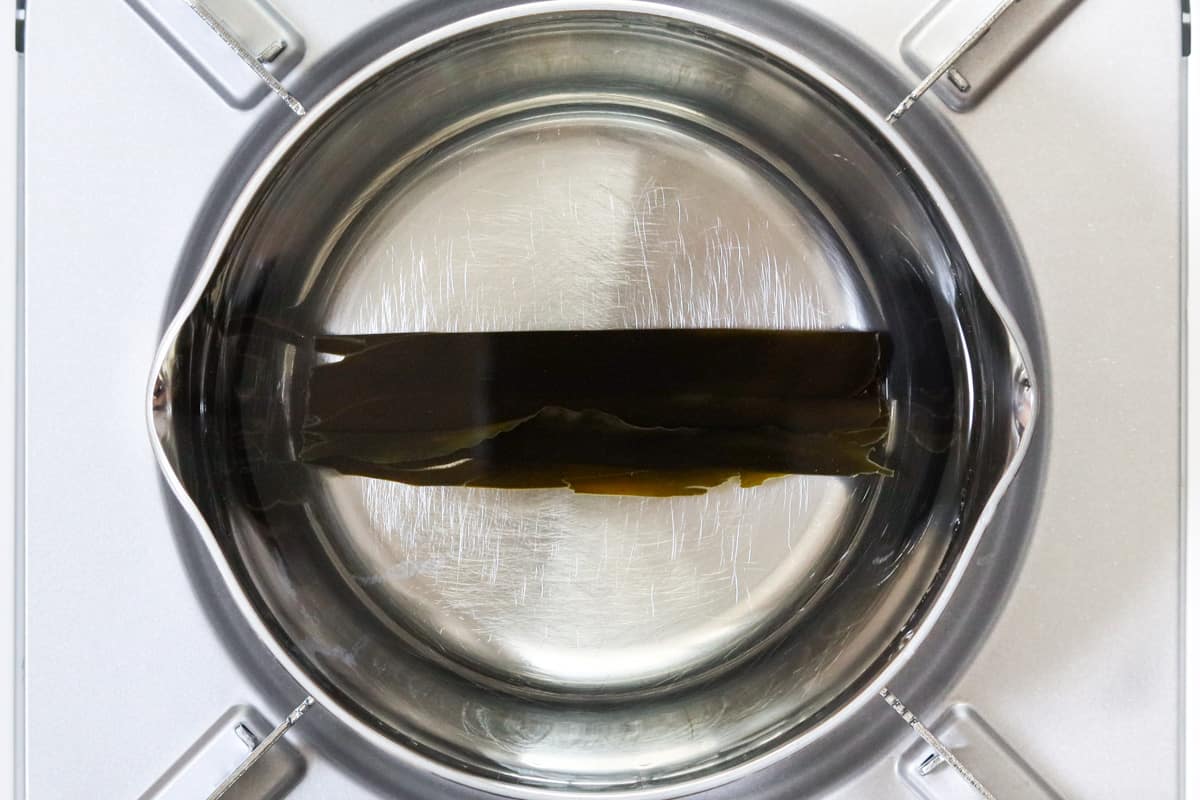
Step 1
Put water and kombu in a pot and let it sit for at least 30 minutes until the kombu softens.
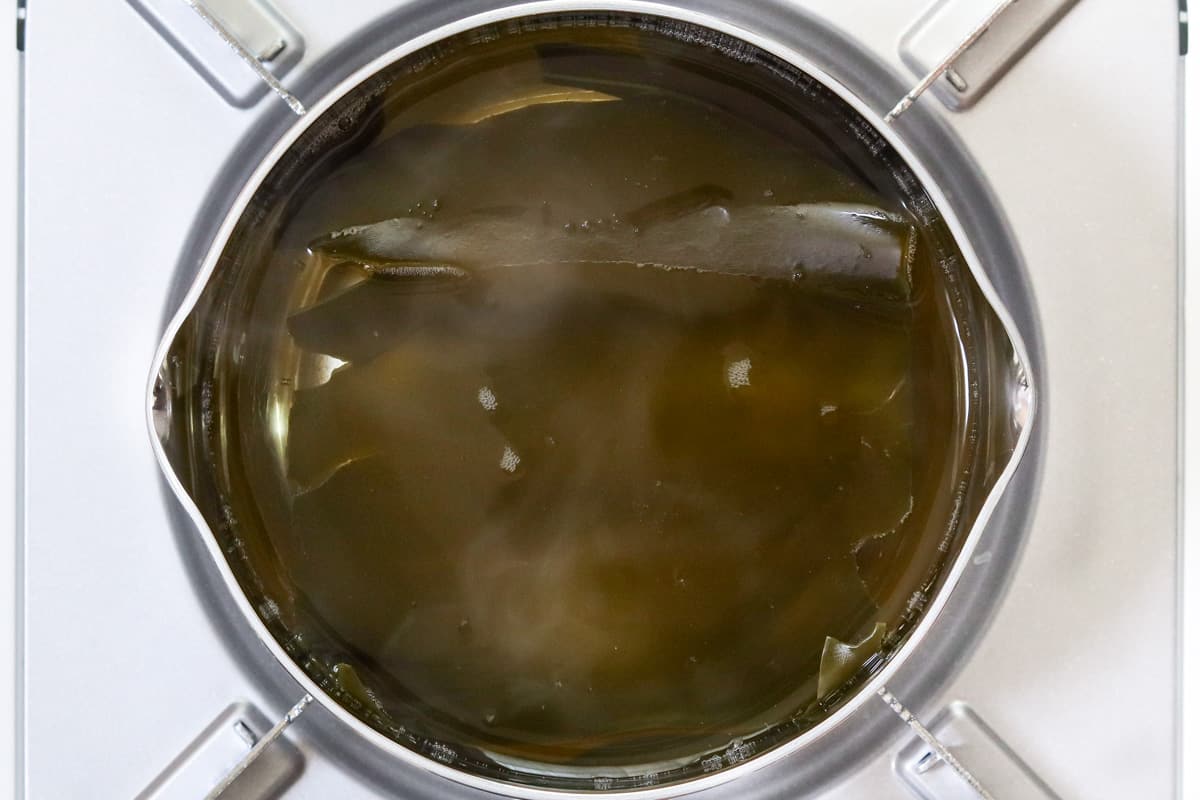
Step 2
Heat the pot over very low heat for about 10 minutes (for 2 servings). When small bubbles appear on the surface of the liquid, remove the kombu.
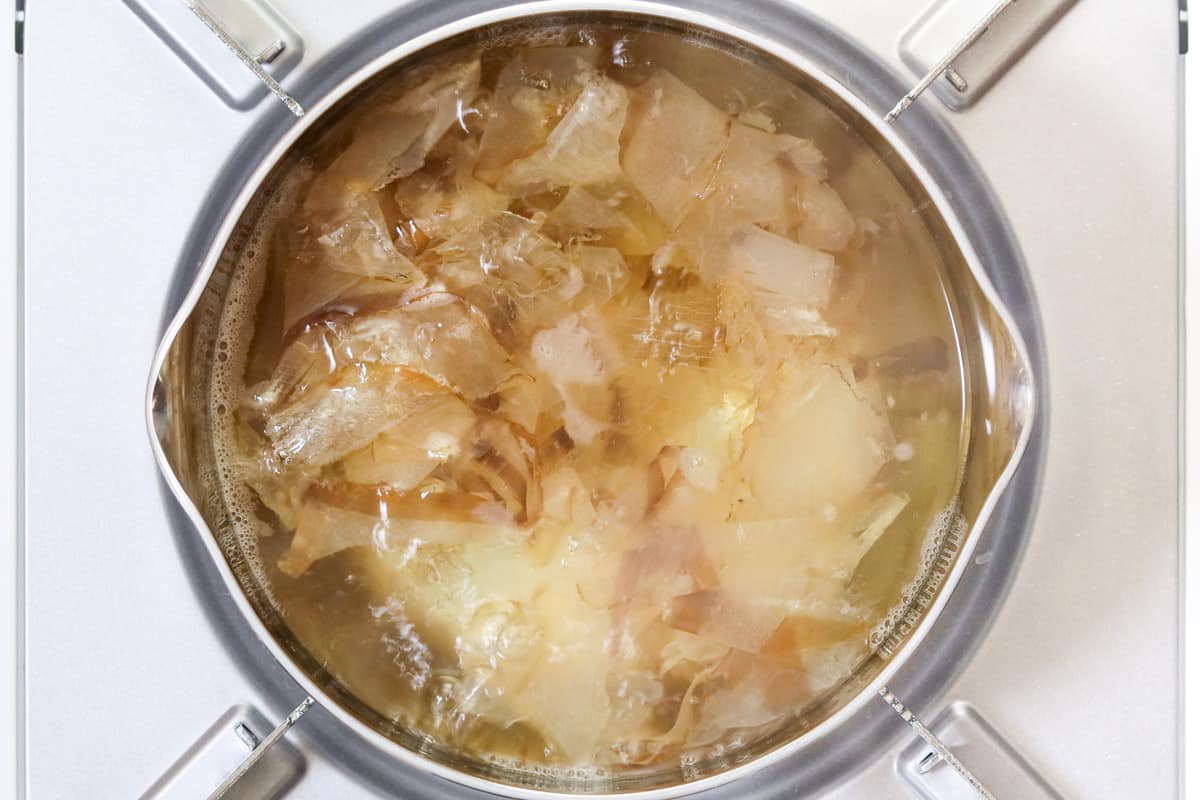
Step 3
Increase the heat and bring the water (kombu dashi) to a boil. Once boiling, reduce the heat to low, add bonito flakes, and let it simmer for 2 minutes.
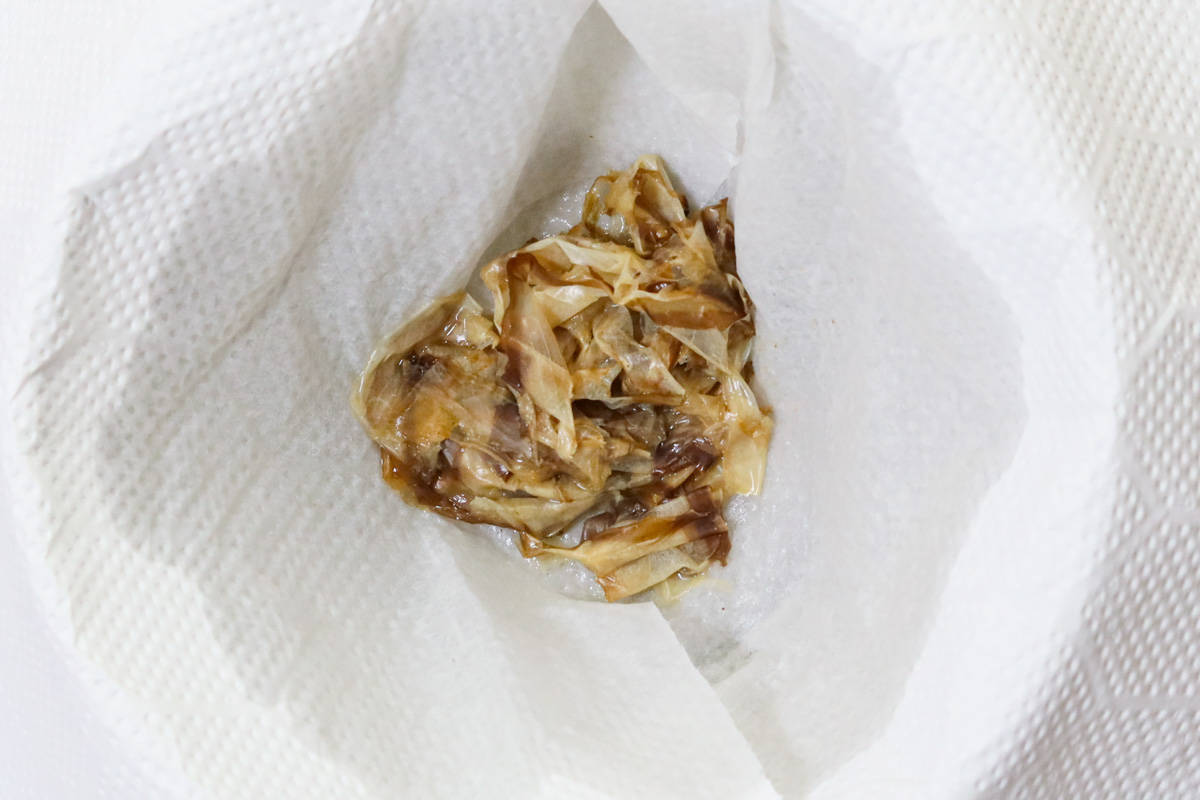
Step 4
Turn off the heat and strain the mixture through a sieve lined with paper towels or a cloth (such as cheesecloth). Alternatively, if you don't mind having fine bonito flakes remaining, you can simply use a fine-mesh strainer. Awase dashi, which combines kombu dashi and bonito dashi, is now ready.

Step 5
Cut cabbage into bite-sized pieces. Thinly slice green onions.
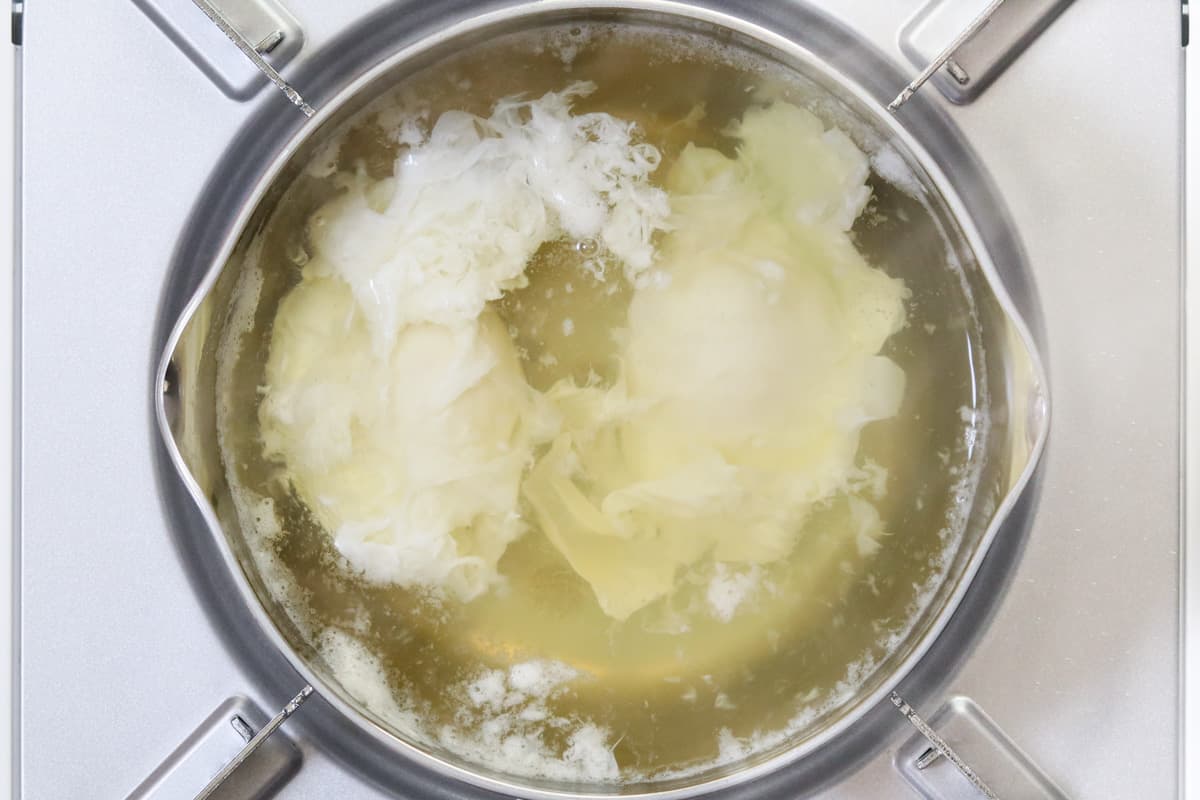
Step 6
Return the dashi to the pot and bring it to a boil. Once boiling, gently crack eggs into the pot. Let them simmer over low heat for 3 minutes.
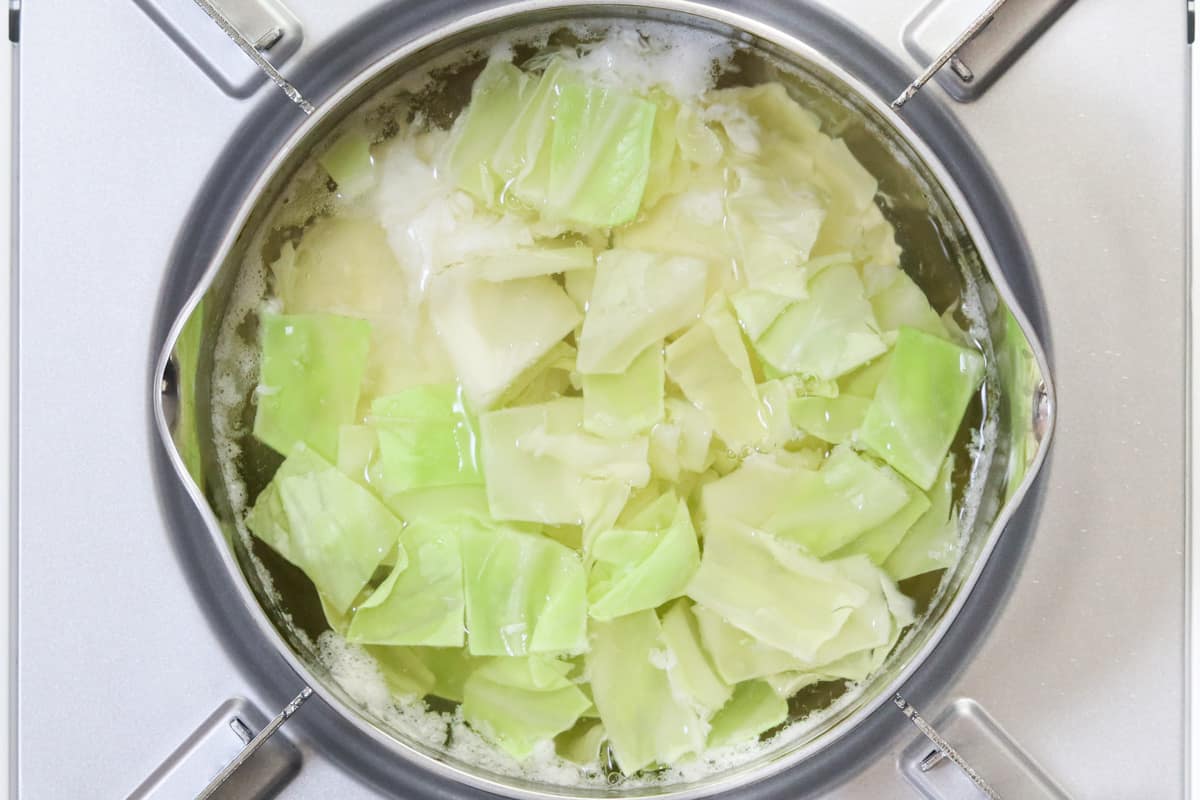
Step 7
Add the cabbage to the pot and continue cooking for an additional 30 seconds.
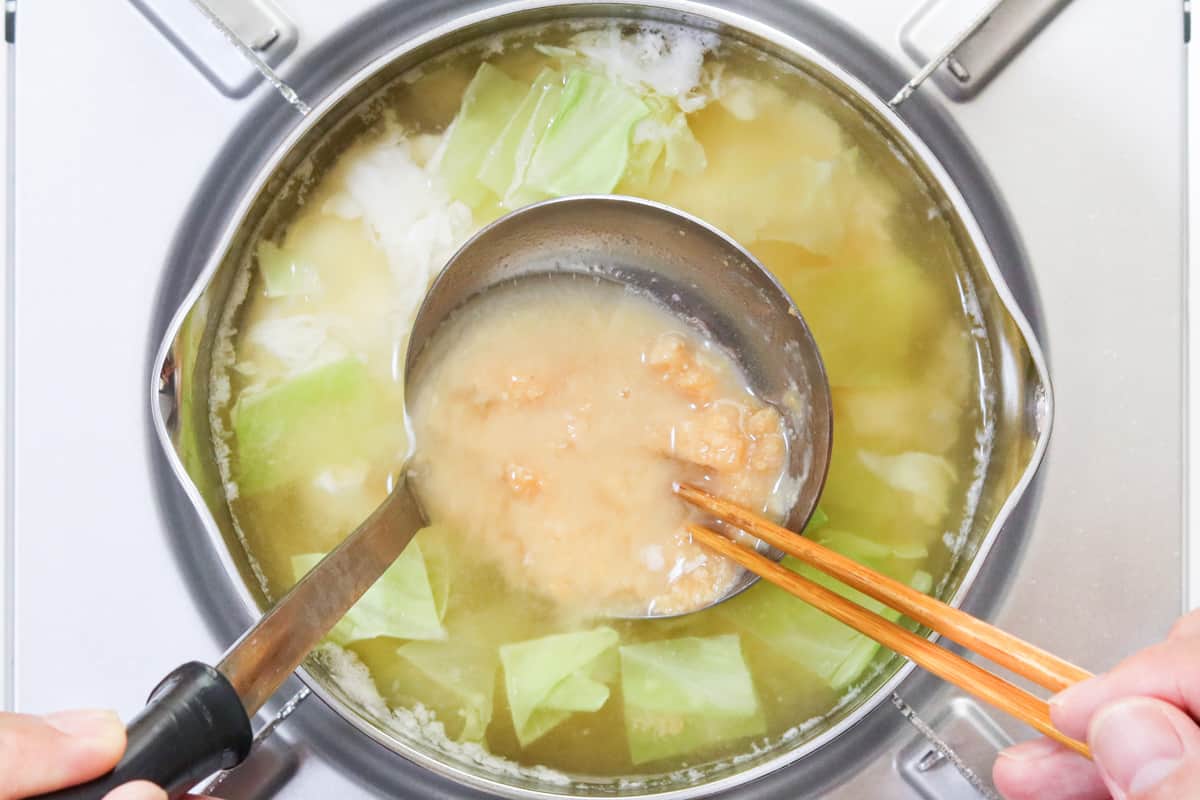
Step 8
Turn off the heat and dissolve the miso in the pot using a ladle and chopsticks, being careful not to break the eggs. Serve in each bowl and top with the green onions.
To Store
You can store it in the refrigerator for up to 2 days.
Recipe Card

Miso Soup with Poached Eggs
Ingredients
- 1.8 oz green cabbage
- 2 green onions / scallions
- 2 pasteurized eggs
- 2 Tbsp miso
Awase Dashi:
- 2 cups water
- 0.17 oz kombu (dried kelp)
- ½ cup bonito flakes (katsuobushi)
Instructions
- Put water and kombu in a pot and let it sit for at least 30 minutes until the kombu softens.
- Heat the pot over very low heat for about 10 minutes (for 2 servings). When small bubbles appear on the surface of the liquid, remove the kombu.
- Increase the heat and bring the water (kombu dashi) to a boil. Once boiling, reduce the heat to low, add bonito flakes, and let it simmer for 2 minutes.
- Turn off the heat and strain the mixture through a sieve lined with paper towels or a cloth (such as cheesecloth). Alternatively, if you don't mind having fine bonito flakes remaining, you can simply use a fine-mesh strainer. Awase dashi, which combines kombu dashi and bonito dashi, is now ready.
- Cut cabbage into bite-sized pieces. Thinly slice green onions.
- Return the dashi to the pot and bring it to a boil. Once boiling, gently crack the eggs into the pot. Let them simmer over low heat for 3 minutes.
- Add the cabbage to the pot and continue cooking for an additional 30 seconds.
- Turn off the heat and dissolve the miso in the pot using a ladle and chopsticks, being careful not to break the eggs. Serve in each bowl and top with the green onions.
Notes
- If you already have awase dashi or another type of dashi, start from step 5. In this case, use 1 ⅔ cups (400ml) of your dashi for 2 servings.
- You can store it in the refrigerator for up to 2 days.

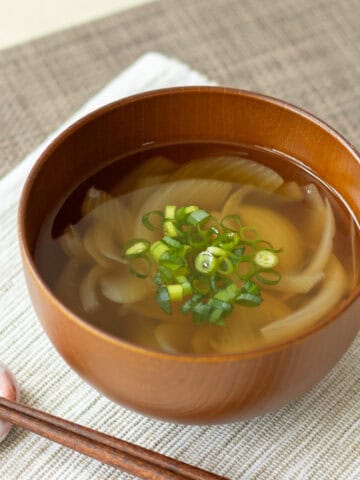



Leave a Reply